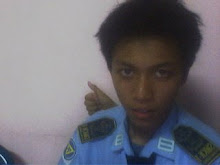
Abu l-Qasim Muhammad ibn ‘Abd Allāh al-Hashimi al-Qurashi (Arabic: أبو القاسم محمّد; Transliteration: Abu l-Qāsim Muḥammad[2]; Mohammed, Muhammed, Mahomet)[3][4][5] (c. 570 Mecca – June 8, 632 Medina),[6] was the founder of the world religion of Islam and is regarded by Muslims as the last messenger and prophet of God (Arabic: الله Allāh).[7] Muslims consider him the restorer of the original, uncorrupted monotheistic faith (islām) of Adam, Abraham and others. They see him as the last and the greatest in a series of prophets of Islam.[8][9][10] Muhammad is also regarded as a manifestation of God by the Bahá'í Faith. He was also active as a diplomat, merchant, philosopher, orator, legislator, general and reformer.[11]
The principal and most credible source of information for the life of Muhammad is the Qur'an.[12][13] Next in importance are the historical works by writers of third and fourth century of the Muslim era.[14] Sources on Muhammad’s life concur that he was born ca. 570 CE in the city of Mecca in Arabia.[15] He was orphaned at a young age and was brought up by his uncle, later worked mostly as a merchant, and was married by age 26. At some point, discontented with life in Mecca, he retreated to a cave in the surrounding mountains for meditation and reflection. According to Islamic tradition, it was here at age 40, in the month of Ramadan, where he received his first revelation from God. Three years after this event, Muhammad started preaching these revelations publicly, proclaiming that "God is One", that complete "surrender" to Him (lit. islām)[16] is the only way (dīn)[17] acceptable to God, and that he was a prophet and messenger of God, in the same vein as Adam, Noah, Abraham, Moses, David, Jesus, and other prophets.[18][12][10]
Muhammad gained few followers early on, and was largely met with hostility from the tribes of Mecca; he was treated harshly and so were his followers. To escape persecution, Muhammad and his followers migrated to Medina[19] in the year 622. This historic event, the Hijra, marks the beginning of the Islamic calendar. In Medina, Muhammad managed to unite the conflicting tribes, and after eight years of fighting with the Meccan tribes, his followers, who by then had grown to ten thousand, conquered Mecca. In 632, a few months after returning to Medina from his 'Farewell pilgrimage', Muhammad fell ill and died. By the time of his death, most of the Arabian Peninsula had converted to Islam.[citation needed]
The revelations (or Ayats, lit. Signs of God), which Muhammad reported receiving until his death, form the verses of the Qur'an,[20] regarded by Muslims as the “word of God”, around which the religion is based. Besides the Qur'an, Muhammad’s life (sira) and traditions (sunnah) are also upheld by Muslims.
Figurative depictions of Muhammad were a significant part of late medieval Islamic art; however, such depictions were generally limited to secular contexts and to the elite classes who could afford fine art.[21] The taboo on depictions of Muhammad was less stringent during the Ottoman Empire, although his face was often left blank.[22]
